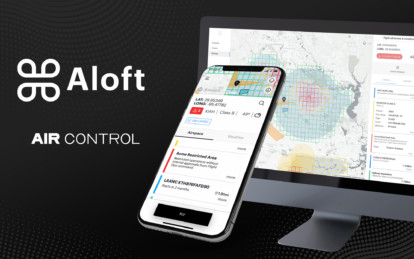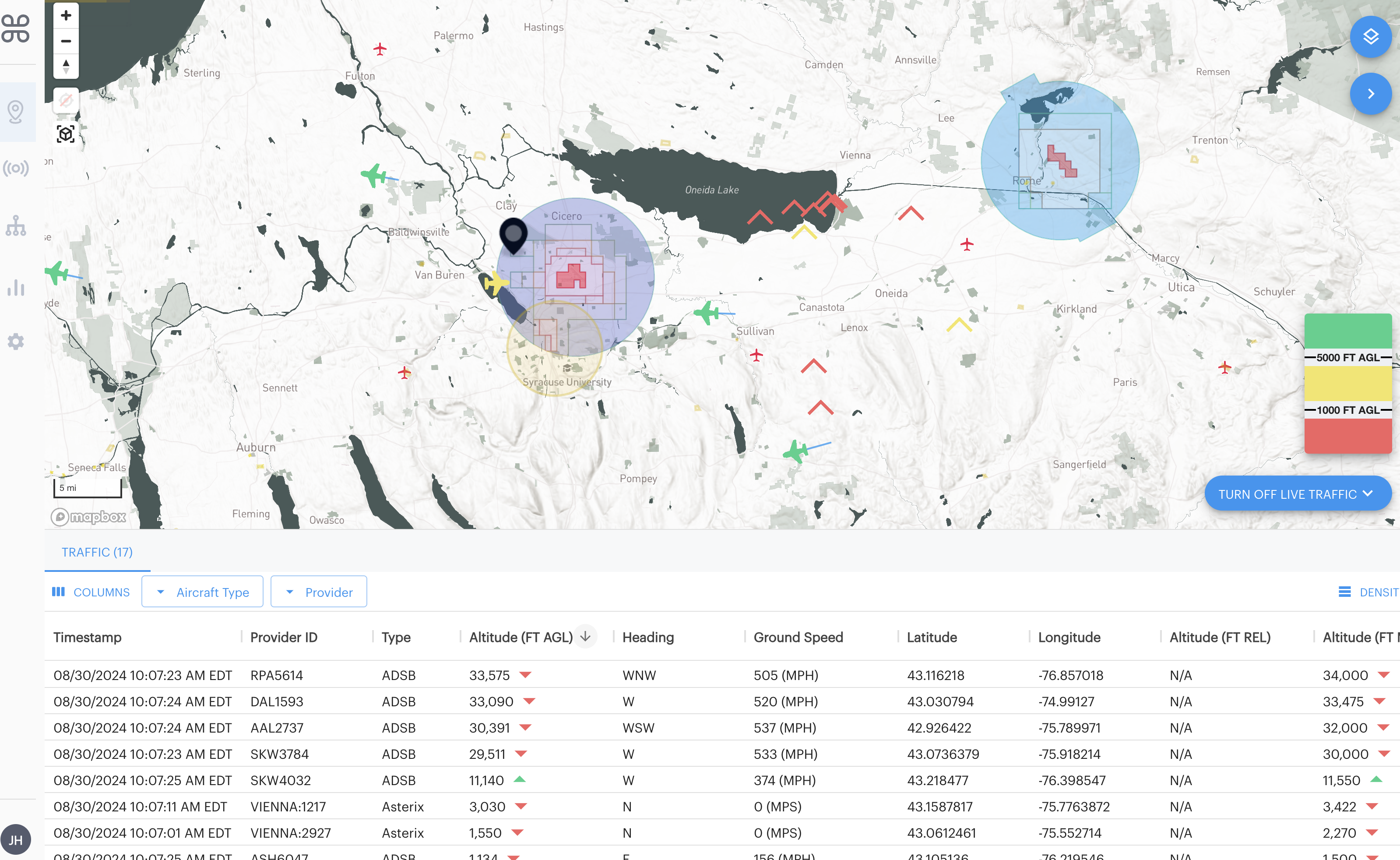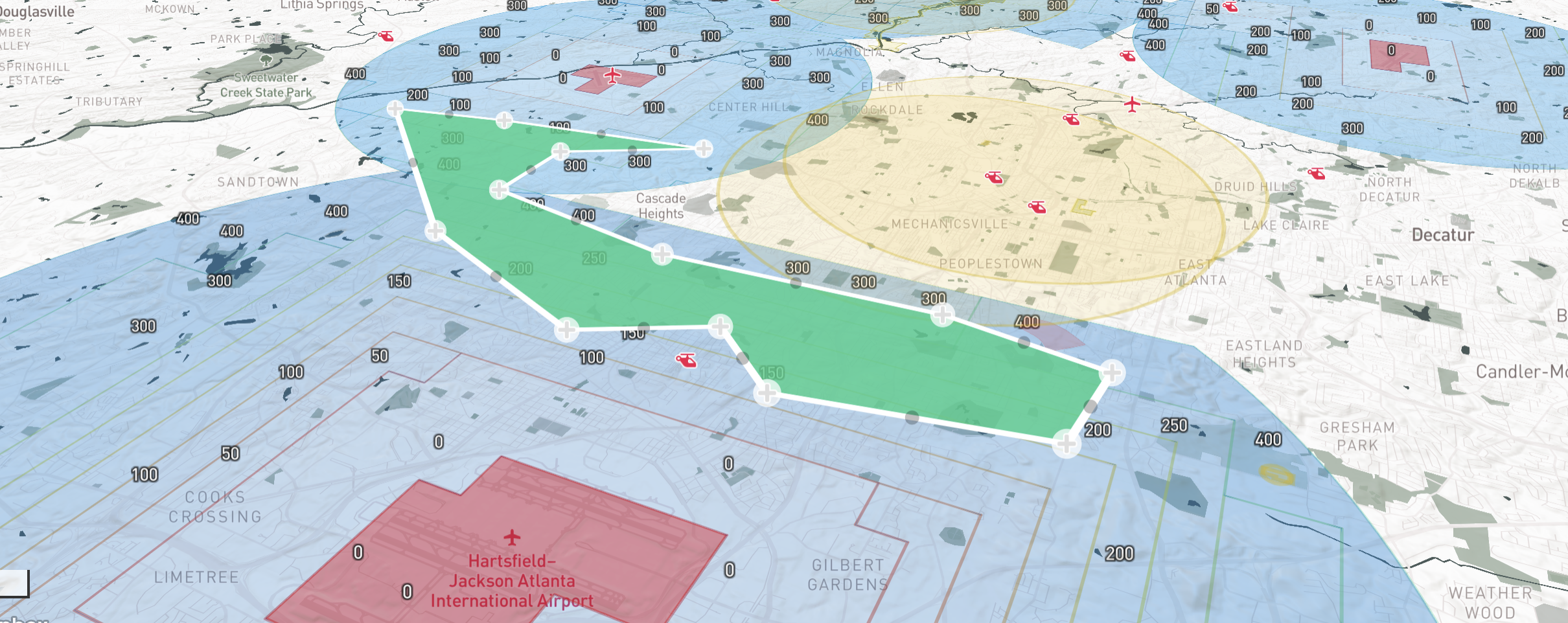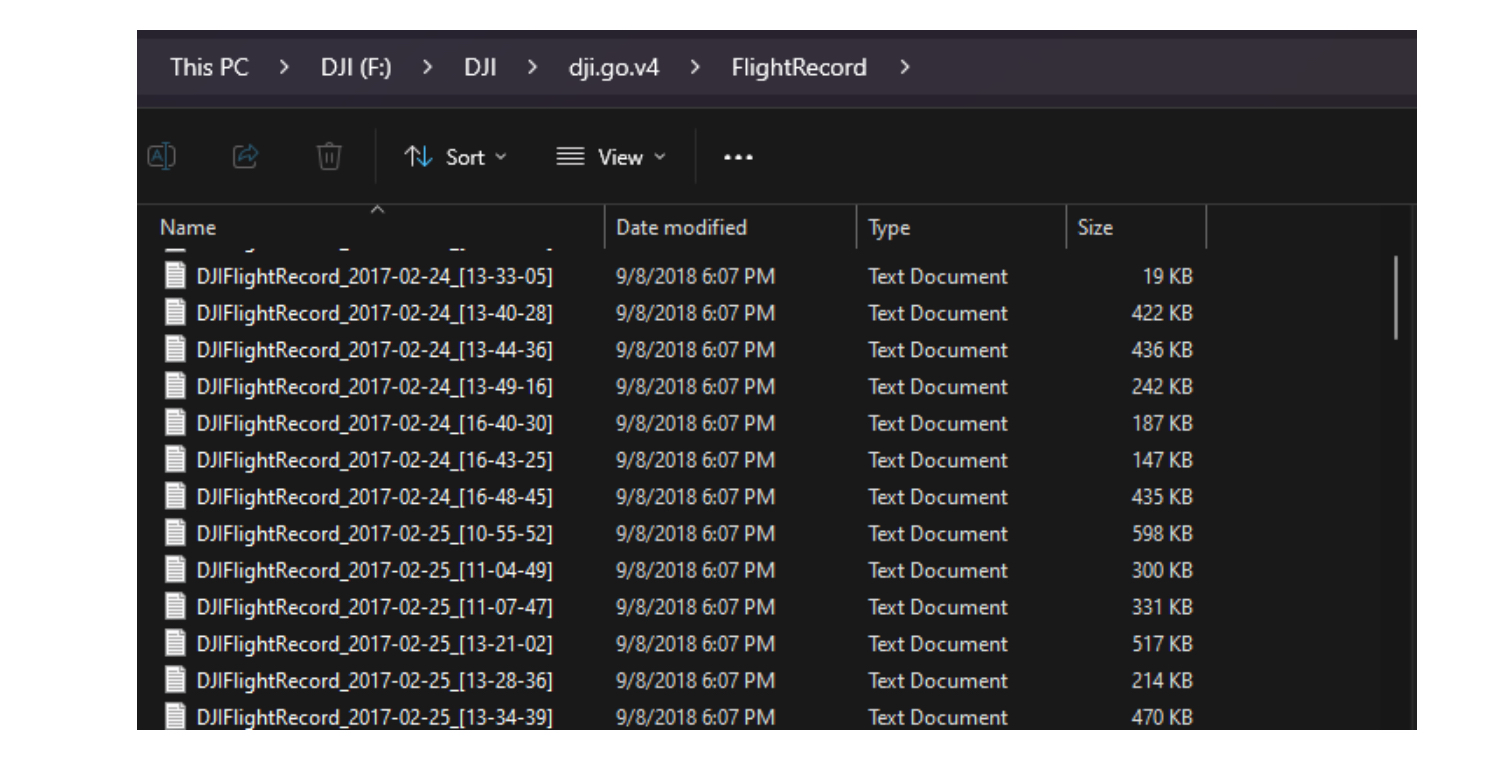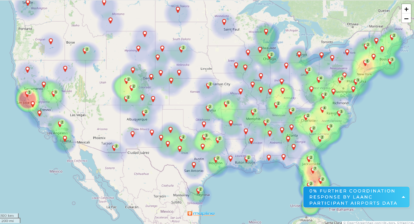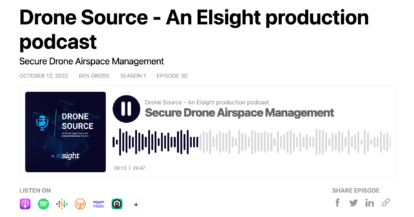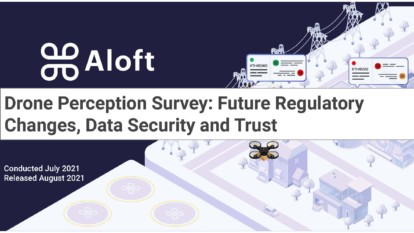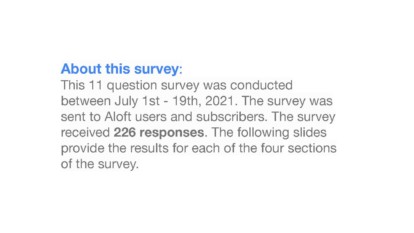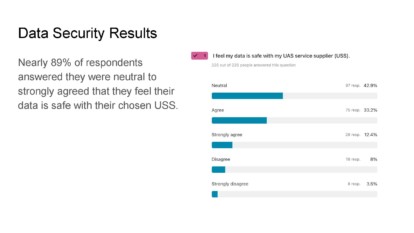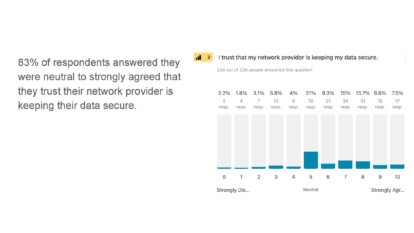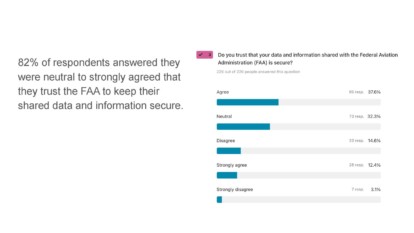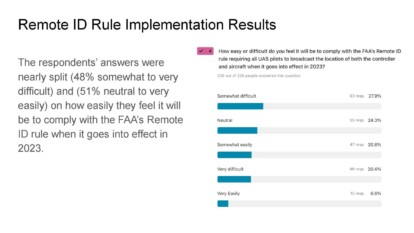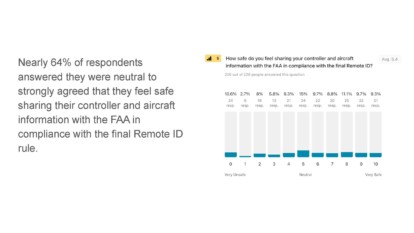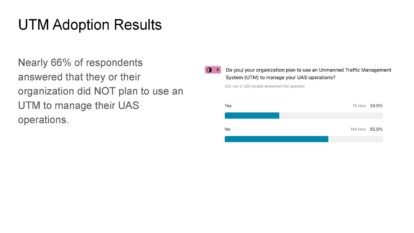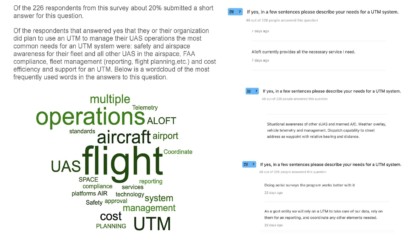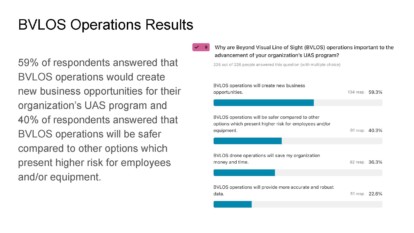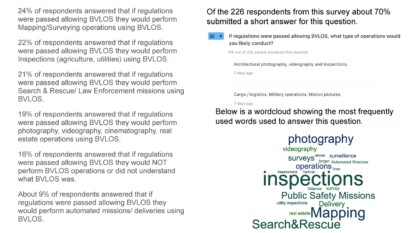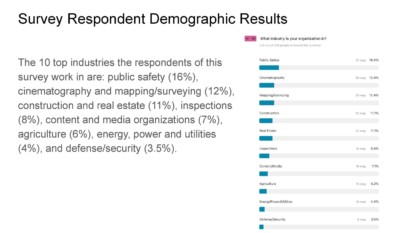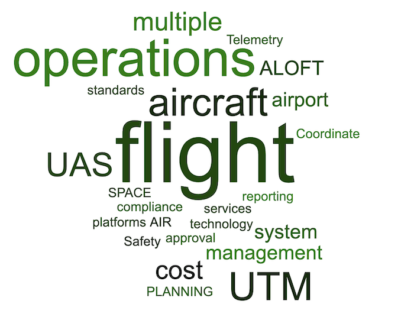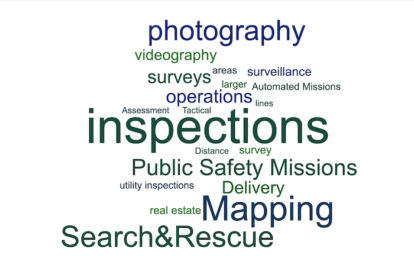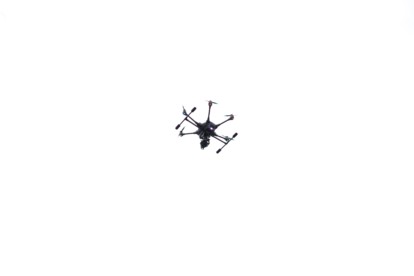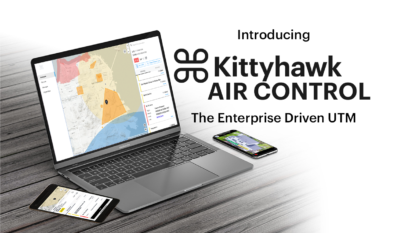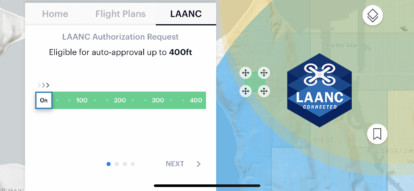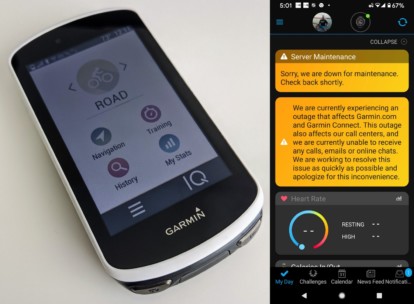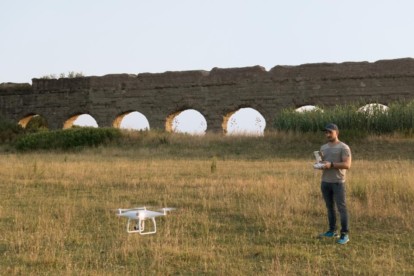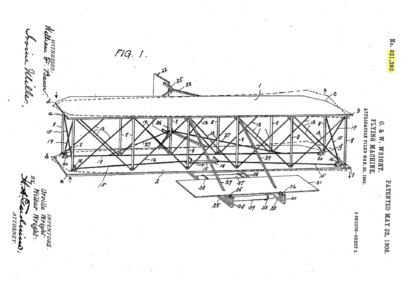Homepage - 2

The #1 FAA Approved Airspace Platform
Complete Fleet & Airspace Management

One mobile, desktop, and developer platform for individual pilots, public safety, and the enterprise.
Find the Right Solution for Your Needs
We offer a wide variety of solutions for airspace and fleet management for individual drone pilots,
enterprise UAS programs, developers, and more. Whether you're looking for airspace management
capabilities, need to track your team’s UAS activity in one single data record, or simply apply for a
LAANC authorization, we've got you covered.
Air Control
One platform supporting
the entire Aloft community
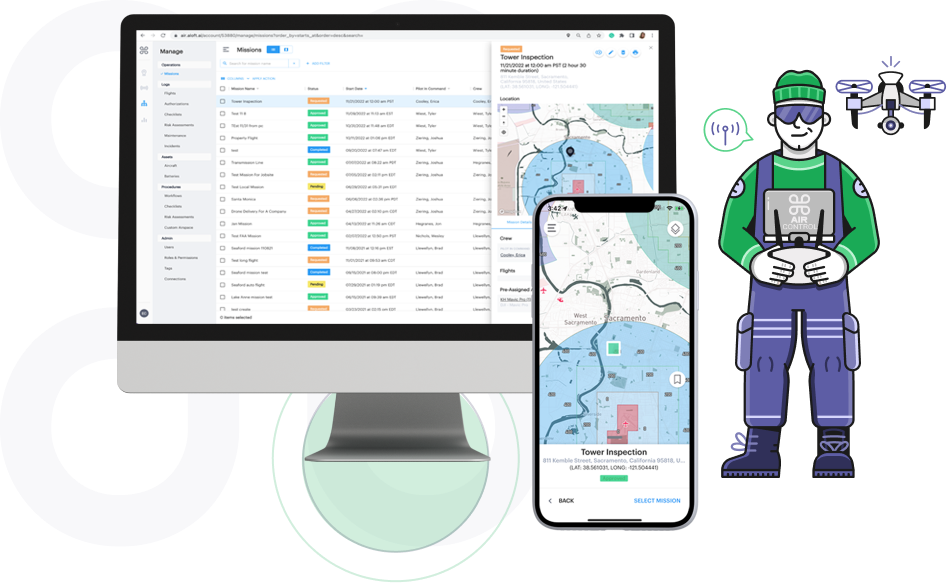
Aloft Air Control for Enterprise
The Air Control platform is one single data record for enterprise drone fleets
with additional features designed for enterprise UAS programs like user
management, reporting, enhanced SOC2/ISO27001 security, integrations
and APIs and more.
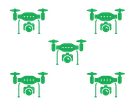
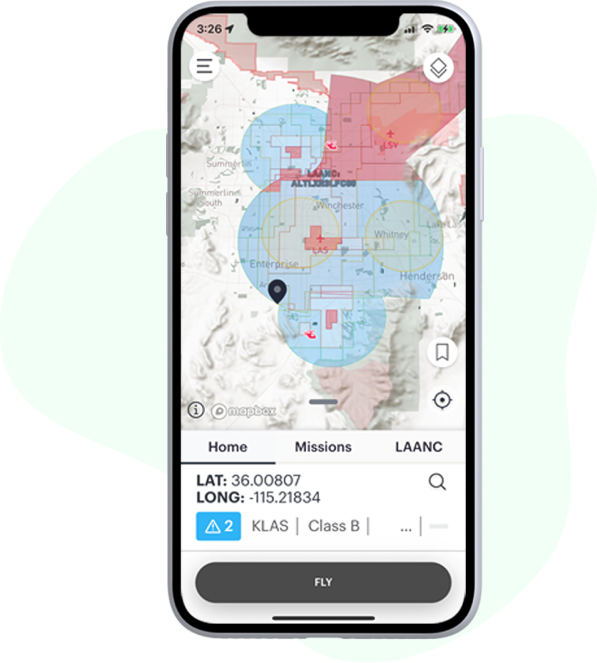
Start Using Aloft Air Control for Individual Drone Pilots Today!
Aloft Air Control is now available for individual drone operators to use for free to
perform primary tasks like applying for LAANC authorizations in near real-time,
checking the airspace for nearby safety advisories and planning missions that
include fully customizable checklists and risk assessments.

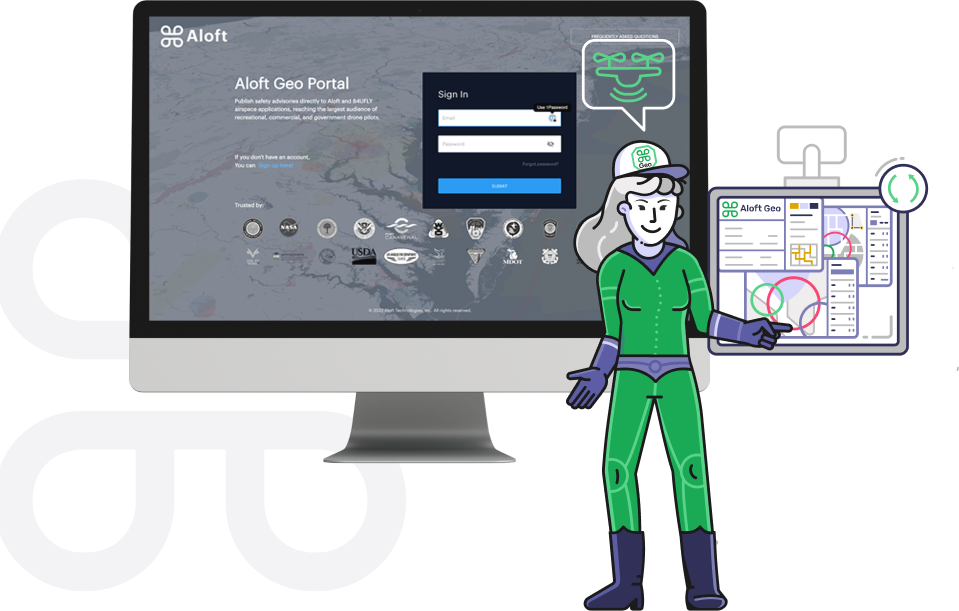
Aloft Geo Portal for Connecting Local Drone Rules to National Air Traffic Management
If you represent a government/ authoritative agency looking to submit local
drone rules and ordinance to the largest network of drone operators, get
started submitting your data for free to the Aloft Network (including the
B4UFLY platform) today using Geo Portal.
Trusted by:








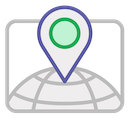
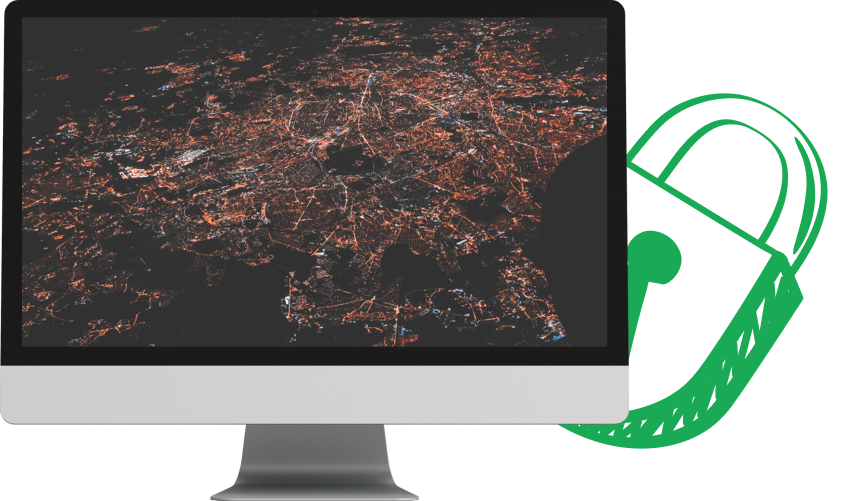
Security
Your Drone Net Sec Layer
One secure data system of record from aircraft to mobile to web


Developers
Exchange data and media with internal systems programmatically
through the Aloft API.
Read the Latest News
from Aloft
Listen to our podcast
Aloft Launches New Fleet & UTM Capabilities, Surpassing 84% of LAANC Airspace Authorizations In September
With the release of new Air Control functionality in September – including our new Skydio integration – we also opened access to Air Control’s web, mobile apps, and developer tools to all users. The result was a record month across the Aloft platform, highlighted by powering over 37k LAANC airspace requests for our recreational, commercial, and government users. This represented over 84% of the 43k total LAANC requests the FAA received in September.
Following a record month across Aloft’s patented Dynamic Airspace UTM platform, we are also excited to announce the release of the FAA’s v6 LAANC upgrade, immediately available in all Aloft Air Control web and mobile applications. We appreciate Aloft’s mission-critical role in your daily drone operations, and this new upgrade is immediately available to all users.
Aloft’s network of drone users continue to set new records for commercial (Part 107) airspace requests and total requests ever processed in our secure UTM platform. New functionality on Air Control – such as new web tools for LAANC to edit, duplicate, print, sort, and export – had record usage by our commercial pilots to gain access to controlled airspace. Exclusive data from Aloft Geo for situational awareness – featuring over 2 million square kilometers of safety data from authoritative sources like NASA, NOAA, Pennsylvania DOT, and the FAA – is providing a complete picture for Aloft pilots to plan safe and compliant drone flights.
Let’s get into the data.
Four years ago, Aloft became an FAA-approved UAS Service Supplier (USS) for LAANC airspace authorizations. That month we did 159 LAANC requests. As we’re now processing over 37k requests and see more than 84% of all LAANC activity, we wanted to share some insights into this first, critical step in the evolution of UTM. There are positive signs around commercial adoption, but also some elements of concern for the future of airspace integration.
LAANC Compliance Rates
Record LAANC numbers and milestones like 1 million authorizations only mean so much without knowing the denominator. When we dug into the data, we estimated that only 20-30% of drone flights in controlled airspace have LAANC authorization.
To estimate the compliance rate, we acquired radar data for drone detection around a few select airports to give us the total number of flights (the denominator). We then took the total number of Aloft airspace authorizations, and with our market share, we can estimate how many flights were compliant.
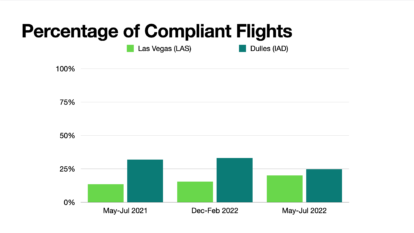
We have done this analysis at Dulles (IAD) and Las Vegas (LAS) airports over three 3-month periods. The trends at IAD are getting worse. The trends at LAS are getting better. But they both show an estimate that only a small percentage of drone flights have the proper approvals.
Along with sharing this information with the FAA, Aloft chairs the Drone Safety Team Data Working Group where we have presented this data. There are multiple ways to address this growing safety issue, from more education and outreach to more technology improvements for the LAANC program to unlock USS in providing these critical airspace safety services.
Commercial vs Recreational
Three years ago LAANC expanded to include the ability for recreational pilots to request authorization. This was a huge upgrade to LAANC, and adoption grew quickly in the first year. By June 2020, there was less than a 4k monthly delta between recreational (~12k) and commercial (~16K) monthly authorizations.
Fast forward to September 2022 and the monthly delta has ballooned to nearly 16k.
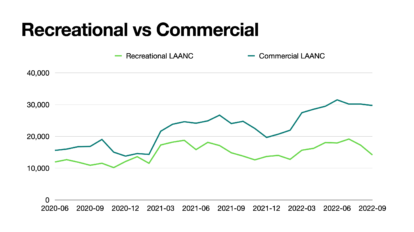
As recreational pilots represent the majority of drone pilots, it’s critical for this group to have education and access to LAANC functionality in an expanded envelope of what is offered today. The current LAANC structure is providing limited access versus what could be offered to the masses of drone pilots.
Airport & Air Traffic Participation
While LAANC provides authorization to fly in controlled airspace, there really isn’t much interaction with Air Traffic Control (ATC) – with the exception of “further coordination”. Further coordination (“FC”) LAANC is available only to commercial Part 107 pilots and it enables pilots to request authorization above the pre-approved ceilings, such as requesting to fly up to 100ft in a 0ft grid.
FC LAANC requests only make up about 10-15% of all commercial LAANC requests, but they provide a valuable tool for pilots to access valuable airspace. The downside to FC requests is they require manual review by ATC to get approved, and based on Aloft data (where we processed 85.8% of all FC requests in September), there is a major communication breakdown. In fact, across our total history of FC data, we track over 200 airports that have a 0% response rate. Use the interactive map below, to view each of the airports which currently have a 0% Further Coordination response rate. The colors on the map are a heat map representing the number of futher coordination requests each of the airports have received to-date by total number. Red areas indicate the highest density of further coordination requests submited by operators to date for each area to blue being the least number. Click on each red pin for further information about the total number of futher coordination requests a select airport has received to date.
From large and busy airports like San Francisco (SFO), which received the highest number of FC LAANC requests, to small Class D airports like Charlottesville (CHO), hundreds of airports are simply not responsive. Most FC requests time out, as USSs are required to cancel FC requests within 24 hours of the planned start time if ATC has not given a yay or nay.
Some very responsive airports, like Austin (AUS), approved 78.5% of all FC requests submitted through Aloft. No doubt, ATC operators have higher priorities at times. Still, we are encouraged by airports like AUS that demonstrate their attentiveness to all aircraft flying in their airspace – whether legacy airplanes or drones.
Drone Source - An Elsight production podcast Episode 30: Secure Drone Airspace Management with Aloft CTO, Joshua Ziering
"When discussing UTM, we [at Aloft] think about openness, championing the idea of collaboration over competition which is the only way UTM will take flight and work is if all providers are working together. Collaboration over competition really is going to set the stage for an ecosystem where you are going to have the ability to get these services from a number of different providers and choose the provider that is right for you. Depending on your need maybe you need a provider which has really great security or a provider that is really low cost, the choice will be yours. The evolution of the internet has shown us, you have to have interoperability. So collaboration over competition is really going to set the UTM ecosystem free."- Aloft CTO, Joshua Ziering states on recent episode of the Drone Source- An Elsight Production Podcast.
Check out Drone Source – An Elsight production podcast Episode 30: Secure Drone Airspace Management with Aloft CTO, Joshua Ziering.
In this episode we talk with Aloft’s Josh Ziering, discussing drone data security, UTM & AAM, and how Aloft has supported drone operations in the aftermath of Hurricane Ian.
Trust , Opportunity and Security: How do drone operators feel about future regulatory changes for the drone industry from Remote ID to BVLOS?
How safe is my data? A user study on data security and potential use cases enabled by regulatory changes
Aloft is proud to work with many key stakeholders across the drone industry. Our principles for public policy are all essentially about the same thing: enabling flight at scale with safety and compliance. We recently joined the Board of the Commercial Drone Alliance (CDA) and were named a member of the FAA’s new Beyond Visual Line-of-Sight (BVLOS) Aviation Rulemaking Committee. We’re excited to bring the voice of our enterprise customers and represent the largest user base of recreational drone pilots in these efforts.
To further our mission and bring new insights into future industry discussions, we recently conducted a study of our community to gain insight on how drone pilots and operators feel about future regulatory changes and the impact they could have on future drone use cases and operations. This 11 question survey was conducted between July 1st – 19th, 2021. The survey was sent to Aloft users and subscribers and received 226 responses from a variety of industry users. View a slide show of the results for each of the four sections of the survey below. Keep reading for the collected data and analysis of the study on topics including drone data security, remote ID implementation, UTM adoption, and BVLOS operations.
Data Security
Data security and general information safety is paramount for the continued success and growth of the drone industry. For this reason, we are constantly working to improve and strengthen our platforms’ security and interested in what type of security improvements our user’s need for their drone programs. In this study, respondents were asked how safe they felt their data was with their chosen UAS Service Supplier (USS), network provider, and with the FAA. Nearly 89% of respondents answered they were neutral to strongly agreed that they feel their data is safe with their chosen USS. 83% of respondents answered they were neutral to strongly agreed that they trust their network provider is keeping their data secure. 82% of respondents answered they were neutral to strongly agreed that they trust the FAA to keep their shared data and information secure. In looking at these results, we see that the majority of users feel their network provider (i.e. cellular service provider), USS and the FAA are keeping their data and personal information secure.
Remote ID Implementation
The second section of the survey asked respondents their opinion on future implementation of remote identification for UASs. The respondents’ answers were nearly split (48% somewhat to very difficult) and (51% neutral to very easily) on how easily they feel it will be to comply with the FAA’s Remote ID rule when it goes into effect in 2023. Nearly 64% of respondents answered they were neutral to strongly agreed that they feel safe sharing their controller and aircraft information with the FAA in compliance with the final Remote ID rule. While the majority of respondents felt that the personal information required to be shared with the FAA in compliance with Remote ID will be safe, the respondents were nearly split on how easy they felt the implementation of Remote ID would be. As we edge closer to the Remote ID rule’s effective date in 2023, we hope operators will gain further clarity on how UTM solutions like our Air Control platform can streamline airspace awareness and provide the necessary tools for Remote ID compliance for all operators in enterprise drone programs.
UTM Adoption
The final section of the survey asked respondents their opinion on the adoption of UTM. Nearly 66% of respondents answered that they or their organization did NOT plan to use an UTM to manage their UAS operations. Of the 226 respondents from this survey, about 20% submitted a short answer describing their UTM needs.
Of the respondents that answered that they or their organization did plan to use an UTM to manage their UAS operations, the most common needs for an UTM system were: safety and airspace awareness for their fleet and all other UAS in the airspace, FAA compliance, fleet management (reporting, flight planning,etc.) and cost efficiency and support for an UTM. In the wordcloud below you will see the most frequently used words in the answers to this question.
From these results, we can glean that users are looking to UTM to provide FAA compliance, fleet management and airspace awareness from one cost efficient platform.
BVLOS Operations
As many of you may agree, future regulatory changes enabling beyond visual line of sight (BVLOS) operations could greatly expand the capabilities of drone operations in the US. 59% of respondents answered that BVLOS operations would create new business opportunities for their organization’s UAS program and 40% of respondents answered that BVLOS operations will be safer compared to other options which present higher risk for employees and/or equipment.
Of the 226 respondents from this survey about 70% submitted a short answer for the type of BVLOS operations they would likely conduct if future regulations allowed it.
24% of respondents answered that if regulations were passed allowing BVLOS they would perform Mapping/Surveying operations using BVLOS.
22% of respondents answered that if regulations were passed allowing BVLOS they would perform Inspections (agriculture, utilities) using BVLOS.
21% of respondents answered that if regulations were passed allowing BVLOS they would perform Search & Rescue/ Law Enforcement missions using BVLOS.
19% of respondents answered that if regulations were passed allowing BVLOS they would perform photography, videography, cinematography, real estate operations using BVLOS.
About 9% of respondents answered that if regulations were passed allowing BVLOS they would perform automated missions/ deliveries using BVLOS.
While 16% of respondents answered that if regulations were passed allowing BVLOS they would NOT perform BVLOS operations as it was not critical or impactful to their current operations.
In the wordcloud below you will see the most frequently used words in the answers to this question.
From these survey questions on BVLOS, we can conclude that users feel there are many use cases which are currently not possible for drones but with BVLOS regulatory changes could enable opportunity for drones to be used in new and innovative ways. Though to note, 16% of respondents stated they would not perform BVLOS operations even if regulatory changes permitted it. This study shows that inspections, mapping, search & rescue and photography were among the most frequently listed types of operations users would like to use BVLOS for.
As drone technology continues to evolve with more automation in hardware and software, the regulatory framework will need to change to meet these new capabilities and continue propelling the drone industry forward. Above innovation though, security and safety will always remain the cornerstones of aviation culture. Remote ID regulations and the adoption of UTM for enterprise drone programs will ensure that the future of the drone industry continues to evolve with data security and operational safety as the guiding forces. The implementation of Remote ID in 2023 for all UAS operators and the adoption of UTM systems by enterprises will provide greater airspace visibility and safety while also keeping each user’s data and personal information secure. The potential for future use cases to be enabled with BVLOS regulations is something that the users in this study confirmed is highly important for the advancement of the industry. The response from this study is clear, drone users are looking to regulators to continue evolving the industry’s regulatory infrastructure to support innovation and expand the possibilities for drone use cases in the future.
Announcing Air Control: The Next Generation of Enterprise-Driven UTM
Air Control is Kittyhawk Enterprise with Workflows, Security, and Integrations
Today Kittyhawk is releasing Air Control, our new product suite 100% dedicated to powering enterprise UAS operations at scale. It’s Kittyhawk Enterprise with the workflows, security, and integrations that give enterprises more control of their drone data.
You won’t find this in an app store. But it’s available and operations-ready today.
—–
We believe that repeatability and accountability are critical to enterprise success. We believe compliance and security are central to mission-critical workflows. We believe that enabling flight for the next generation of aviation operations creates a fundamental shift in business economics. Last but not least, we believe that listening to our customers is the cornerstone of how we can best innovate and solve real problems — both today and tomorrow.
Where we started on a mission to enable flight, we created the largest UAS software platform. We developed leading aviation and airspace technologies used across the full spectrum of UAS stakeholders — from elite enterprise flight ops to the FAA. While our flagship applications that you can download for free on the app stores have grown to be the most widely used platform for everything from flight tracking to LAANC, we knew there was a new threshold that our enterprise customers need, and we set out to rebuild a new platform from the ground up with a singular focus on enterprise aviation use cases and the future of autonomy, compliance, and security.
Air Control is what happens when you combine best in class compliance and fleet management with the leading suite of enterprise-driven UTM capabilities.
Air Control builds on our hardware-agnostic approach to flight as you can now fly DJI and Parrot natively and securely in our custom flight experience, with more manufacturers and integrations in the works.
Air Control adds new capabilities around autonomy with programmatic data capture and secure storage with new integrations for processing and analysis — from roof measurements to oil tank inspections.
Air Control represents a shift in control and visibility to managers at mission control, with new role and permission management, workflow assignment, customized risk assessments, and enterprise LAANC capabilities for team applications and assignments.
If you’re starting or currently managing a drone program, you’ve probably asked these questions… We know, because we’ve heard these over and over again across industries from insurance to energy, and from rail to utilities.
How do I know if the RPIC completed her preflight checklist before flight?
How do I know if the RPIC got her LAANC authorization before entering controlled airspace?
How do I know if the operation meets our unique risk thresholds?
How do I know if the assigned RPIC is current prior to the mission?
How do I know if the RPIC enabled live streaming?
How do I know if the RPIC is flying in a secure, approved application?
How do I know if the RPIC is flying the latest version of the automated flight plan?
How do I know if the flight plan is compliant per FAA and custom airspace rules?
How do I know what pilots are in the air right now?
How do I know if my UAS program is set up for long-term success — as measured by compliance, security, scale, and ROI?
The team at Kittyhawk has been focused on building Air Control so that you can answer each of these questions with a few simple clicks.
But we also know that a full slate of yes’s today is not the end game. You want a platform that’s built to evolve. We know that your use cases are only getting more complex. We know that your scale is only increasing. We know that your focus on security and privacy will continue to ratchet up.
What we’re most excited about the launch of our Air Control platform is that this is just the beginning of the next generation of flight. We’re building unique connections between airspace, flight, and data. We’re connecting our customers with an outlet to optionally and conditionally share situational awareness with the largest UAS audience for maximum safety. We know who we’re building for, and our objective is to enable flight without sacrifice. Whether that’s a routine inspection or a BVLOS delivery, our enterprise-driven UTM and patented Dynamic Airspace platform are the foundation that will enable your next generation of drone flight.
Read more about Pointivo’s Spatial IQ platform integration into the Kittyhawk Air Control platform to makes inspections more efficient and produces better outcomes here.
We’re honored and humbled to work with the companies that we do. We’re grateful for the opportunity to drive our industry forward. If you’re interested in joining the Air Control revolution, contact us at sales@www.aloft.ai.
Kittyhawk Launches the Next Generation of LAANC UTM
Bringing New Capabilities & Opening More Airspace
Two years ago, when Kittyhawk embarked on building out our UTM with LAANC capabilities, we did so for a simple reason — our users demanded it. Airspace management is central to UAS workflows, and the alternatives that our users and customers were looking for didn’t cut it. They needed a centralized workflow for their operators, with a single source of truth for planning and compliance.
Fast forward to today, and Kittyhawk now operates the largest UAS software platform for recreational and enterprise users, processing nearly half of all LAANC airspace authorizations. At the core of our product strategy process is listening to our users for feedback. We’re excited to announce the latest version of LAANC across the Kittyhawk platform includes a bunch of what you’ve been asking for in your airspace management needs.
Available on your favorite app store (iOS or Android) today and our enterprise-only Air Control platform (with web and mobile access), we’re excited to bring you the next generation of airspace approvals. We’ve added new data to UASFM advisories to make the authorization process more intuitive. We’ve designed new map styles for a more constructive planning process. We’ve removed steps to make the authorization process faster. We’ve opened up access to “further coordination” (approvals above pre-approved ceilings) to all Part 107 users.
New LAANC Capabilities
Perhaps most importantly, we’ve included new LAANC features that will make for a more robust and compliant airspace management process that will result in more airspace access for all of us, including:
-
- Single LAANC authorization areas can span up to 10 miles.
- Each user can have up to three overlapping authorizations.
- Airport grids and advisory information specify if further coordination is available.
- Users can edit existing LAANC authorizations.
- Users can “close” in-process LAANC authorizations (and go apply for others).
Kittyhawk’s new version of LAANC also supports airports with part-time tower operations. When a tower closes, formerly controlled airspace becomes Class G with no LAANC required. With this update, there are now 133 new airports across the country that support LAANC effective September 24, 2020. If you’re curious if your local airport is on the list, you can search our online resource for LAANC participating facilities here.
More LAANC Data Privacy Control
As Kittyhawk recently became SOC 2 Type II certified, we’ve been ahead of the curve for what our users and customers need from a data security perspective. Security and privacy were also a focus in our LAANC updates. The FAA has done a fantastic job advancing the data requirements and what control users have over their LAANC data and requiring that all LAANC data be stored and processed in the US. Encrypted domestic storage has been standard practice at Kittyhawk from Day 1, but we’ve taken this opportunity to update our Privacy Policy and clarify further what controls you have over your LAANC data. Have you read your LAANC provider’s privacy policy? Did you understand it? Knowing and trusting what your airspace provider is doing with your data is arguably more important than design or feature sets. Our commitment at Kittyhawk is to continue being the leader in drone data privacy and security.
More Team Management & Collaboration
Together these are powerful features and security measures that all of our users can enjoy with our latest version of LAANC. Still, the power of these capabilities amplifies in a team setting within our enterprise Air Control platform. Our patented Dynamic Airspace technology displays all of your authorizations in real-time on your airspace map. Managers of drone programs have new capabilities to search, sort, download, and manage their team’s authorizations like never before. To put it another way, the days of wondering if one of your pilot’s got LAANC when they should have are over.
LAANC is no longer just about having authorization, but being able to ensure that your team never flies without LAANC, and more importantly, that all of your flights are within the four-dimensional bounds of those authorizations as verified by real-time telemetry. So as much as we’re excited to bring all of these new capabilities and open up so much airspace for our users, Kittyhawk’s latest version of LAANC is grounded in safety, security, and compliance.
Summary July 2018 DAC Meeting

The FAA’s Drone Advisory Committee (DAC) recently met in Santa Clara, CA. Updated LAANC stats and an extensive discussion of Remote ID were the main highlights.
Quick Update on LAANC
The FAA shared some interesting updates on LAANC. As of July 6, 2018, there have been a total of 13,631 LAANC Airspace Requests. Of those, 92% have been auto-approved, while only 8% required further coordination. By September 2018, the FAA anticipates LAANC availability at nearly 300 air traffic facilities covering approximately 500 airports. Check out the infographic on the next page for some updated stats on LAANC, Registration, Waivers, the Part 107 knowledge, and more!
Andrew’s take: These numbers are promising because they show LAANC is largely working as expected — and should be a game-changer for commercial operations. LAANC authorizations turn a 90-day process into a 90-second process, and with a 90%+ approval rate, commercial drone pilots will be able to fly more missions with more certainty and predictability. In March 2018, FAA officials reported that 32,000 flight authorizations had been processed as of that date. Putting this into perspective, LAANC (in a few months) has already processed almost 30% of all UAS airspace authorization requests that the FAA has processed in its entire history.
Remote ID
DAC took a deep dive into Remote ID. The general consensus was that Remote ID is important and necessary, and — while safety is the number one priority — time is of the essence.
The industry views Remote ID as necessary to unlock further UAS integration into the National Airspace (NAS). Beyond Visual Line of Sight (BVLOS) operations, one of the advanced operations closest to being realized makes robust Remote ID necessary because the operator and the aircraft will be further away from one another, and the operator must know where the drone is at all times.
The security and defense community views universal Remote ID as necessary to help identify the large majority of law-abiding drone pilots and separate them from, as one committee member said, “the nefarious, the clueless, and the careless”. First Responders interacting with drones seek two pieces of information about the operator and aircraft — who are you, and are you authorized to fly here? Remote ID and LAANC go hand-in-hand to address these questions.
The FAA, to its credit, acknowledged the many interrelated moving parts needed to implement and make standards for Remote ID. For example, three standards bodies are debating standards for Remote ID (ASTM International, SAE International, and the Consumer Technology Association) at the same time multiple Remote ID rule proposals are floating around Congress. This shows the speed at which industry wants a standard to develop as well as the challenges of having too many cooks in the kitchen. It is difficult to solve any of these issues in a vacuum, and even more so to solve them all at once.
Andrew’s take:
It is very unlikely Remote ID will be in place next summer as the FAA timeline states. DAC wants Remote ID rules in place yesterday and says they will have trouble moving forward without rules. The problem is that both the FAA and DAC are still waiting for guidance from Congress regarding who will need to be covered by Remote ID, who exactly will have to comply, and what compliance will look like. Currently, the FAA does not expect a Notice of Proposed Rule-Making (NPRM) for UAS Remote ID until Spring 2019. With midterm elections looming in November, the odds of Congress making quick progress is low. There are also competing amendments working their way through the House, both of which nominally support moving forward on Remote ID in different ways. However, there is still a lot of lobbying and negotiating to do before a comprehensive solution is finalized. Depending on the results of this process, it could take months into the new Congress to realize any movement on this issue.
The FAA emphasized that they want to avoid picking winners and losers or the perception of doing so — implying that industry should fight it out. They seem to want that fight to continue until, hopefully, and simultaneously, a critical mass of industry, government, hobbyist, and security interests coalesce around one set of standards AND Congress provides clear rules on who will be required to have Remote ID. It is a difficult coordination problem for the FAA to determine final rules and standards at the same time without putting their hand on the scale.
Conclusion — What can we expect between now and the next DAC meeting?
DAC meets quarterly, so there is a lot that can happen between now and the next meeting, scheduled to be held in Washington D.C. in mid-October. By that time it should be clear whether Congress will be providing any additional clarity on UAS this year. The industry will continue to work somewhat individually on the specific Remote ID solutions that will enable them to support their waiver applications for advanced operations or UTM services.
Two publicly available infographics provided to DAC meeting attendees:
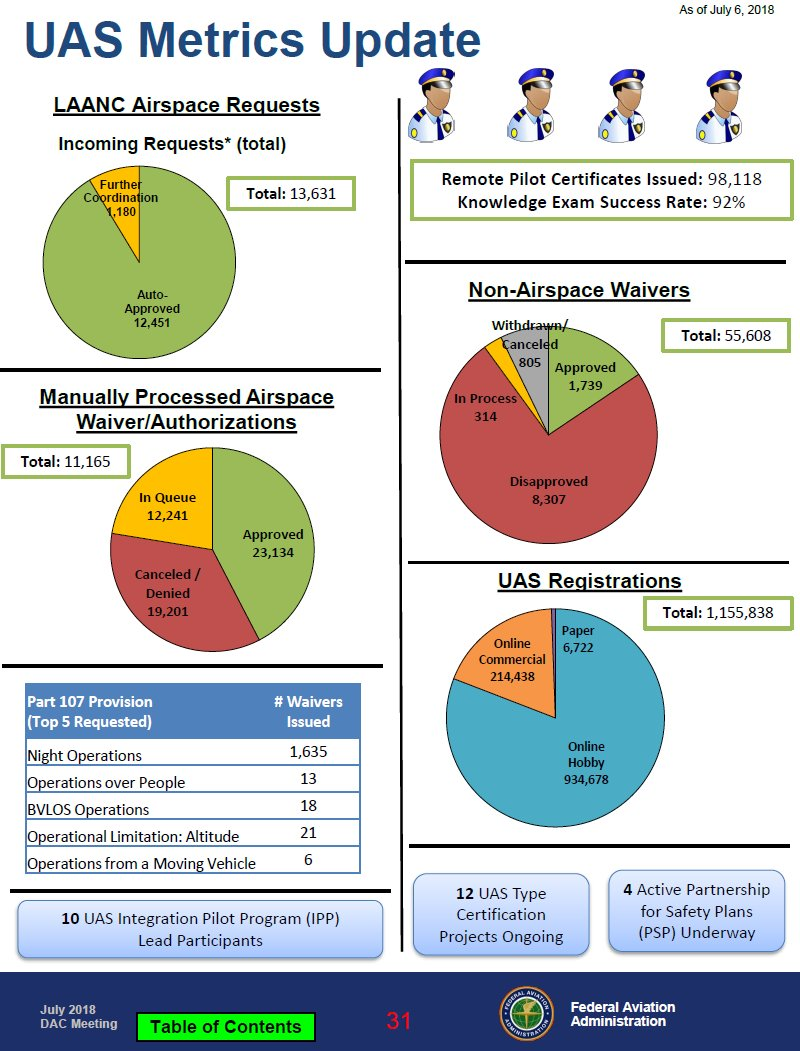
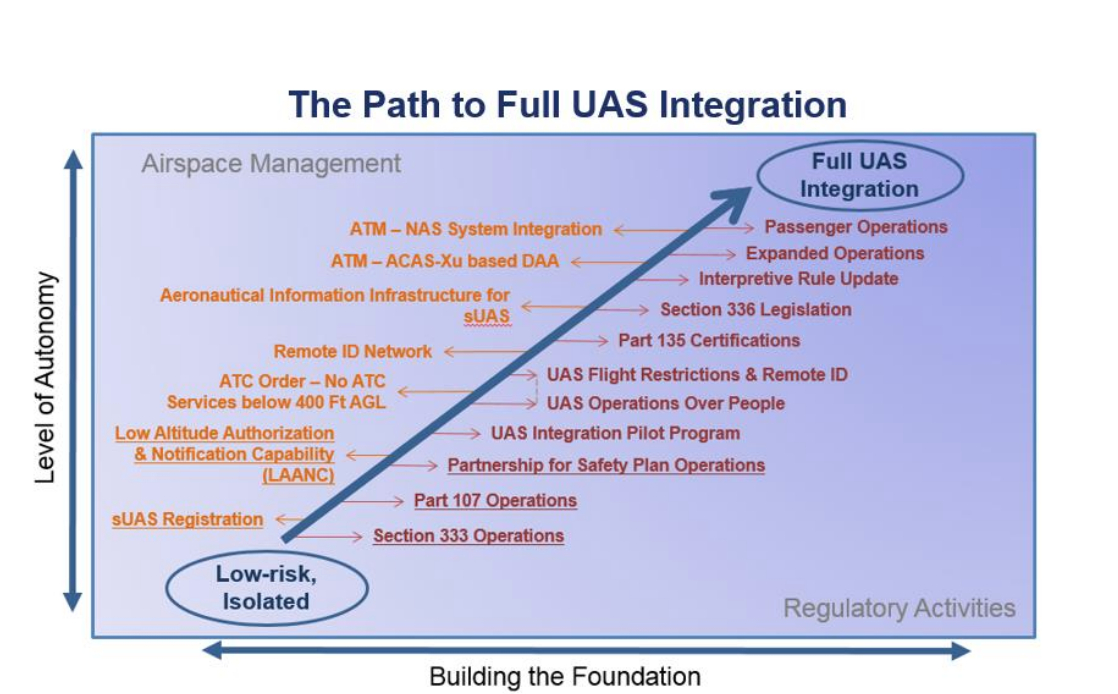
Patent Laws in the Drone Industry
May 22 is an important day in aviation history. It’s also an important day in legal history. In 1906, the Wright Brothers were granted the patent on a flying machine, and in doing so, fired the first shot in one of the longest and detrimental aviation legal fights in history. The legal ramifications of how to enforce this patent would travel across oceans, hinder war efforts and even outlive one of the patent holders.
When the Wright’s developed their flying machine, they maneuvered it by warping the wings, using a front mounted elevator and a rudder to keep the turns coordinated. This was a revolutionary approach that combined the best possible information about aerodynamics and control systems at the time. It was the kind of work you would want to patent. And patent they did.
Orville and Wilbur were scrappy engineers and shrewd businessmen. They knew that vigorously defending their patent was going to help them continue to build their fortune and dominate the rapidly burgeoning field of aviation. They sued just about anyone that had inflight control of a flying machine — and often times won. At least in a court of law. The court of public opinion was not as kind to the brothers. It was rumored that fellow aviators frequently said, “If someone were to jump in the air and wave their arms, they’d hear from the Wright’s lawyer.”
For a time, the Wrights were able to help stave off competitors in the United States. Unfortunately for them, innovation kept happening abroad. Even stateside, the old adage “Constraint breeds creativity.” held true. The French in particular had some ideas about how to get around wing warping. They called it the “aileron” … or little wing. These moveable flaps gave the pilot of the aircraft lateral control without the need for wing warping — the most contentious part of the patent. Innovation wasn’t going to be held back because of a legal battle. It marched on in far off corners of the world.
The patent wars continued even as real war broke out. Famously, American Pilots had to fly European aircraft in World War 1 because American innovation had spent far more time drawing up legal documents than new aircraft designs. The Wright’s were suffocating the industry they created.
By 1915, just 12 years after their first flight, almost every single new aircraft designed was using ailerons rather than wing warping for control. The Wrights had made their money and either died or retired, the lawyers had made their money, but now Europe was far ahead in designing superior aircraft. The damage had been done.
We’re in a unique place in the drone industry. In many ways, we’re at a similar cross roads. Innovation is outpacing regulation and globalization is insuring that the most nimble executors are being rewarded in the market place.
As we approach the next phase of this industry and undertake the broad implementation of a UTM system, it’s more imperative than ever to insure interoperability by baking it in from the start and even more importantly, creating that interoperability on open standards. Like the internet, the UTM system is going to get more useful and robust as there are more providers utilizing it. It’s going to require competing companies to “peer” with each other, and above all, continue to collaborate on the system going forward.
At Kittyhawk, we’re paying close attention everyday for ways to make our UTM offerings more robust in the larger UTM ecosystem. A good analogy for the problem at hand is a cell phone that can only make calls to it’s own carrier. What good is a cell phone that can only call another person on the same carrier? Imagine a wedding toast in that world, “All of this almost didn’t happen because my beautiful wife refused to switch to my cell phone carrier — So I switched to hers.”
There’s so much more opportunity when private industry is able to effectively collaborate. As was oft quoted to me in school, those that don’t study history are doomed to repeat it. A “winner take all” system isn’t going to serve the public or the industry as well as robust standards. Remember that Southwest and United fly into the same airports. Delta and American all talk to the same air traffic controllers. Common standards and open use are the bedrock of creating a sustainable ecosystem for our industry both domestically and abroad.
